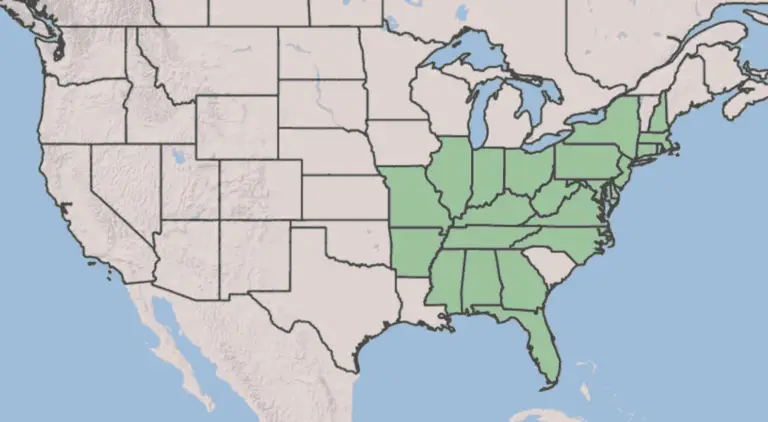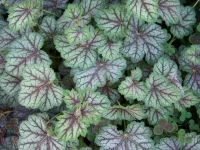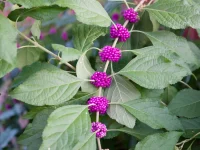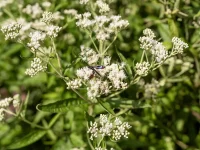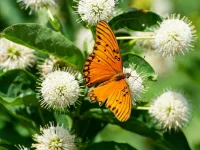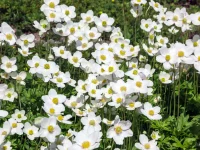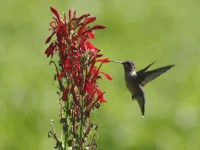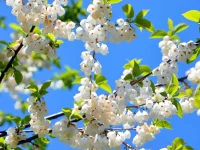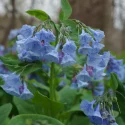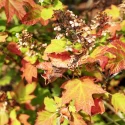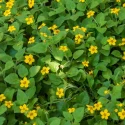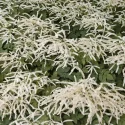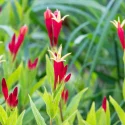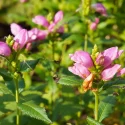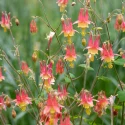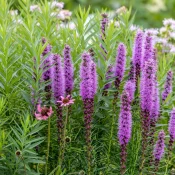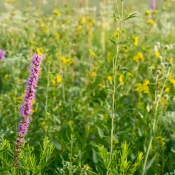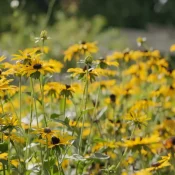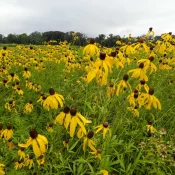Turk’s Cap Lily
Woah. That’s the best way to describe this native showstopper. Turk’s Cap Lily grows an astonishing 4-10 feet and puts out multiple rows of hanging bright orange flowers. When in bloom, it looks like a $100k sculpture. It’s a real mystery why non-native lilies have overtaken most gardens when this native flower has been growing in North America for millennia. Let’s turn that trend around and plant our own flowering candelabras. Scroll on for planting tips.
- Part Sun
- Tall (5'+)
- Summer flowers
- Pollinator lifeline

Where should I plant Turk’s Cap Lily?
Turk’s Cap Lily loves to be in consistently moist areas and semi-shady spots. The only thing that doesn’t work is full sun, and being without water. In nature, it’s found along the edges of deciduous forests where it gets dapple shade and lots of compost, thanks to the leaves that fall from the trees around it.
To mimic this, make sure that your Turk’s Cap is in an area that has semi-shade and ensure that mulch is there to help keep its moisture consistent. This is also a great plant to put near waterways including swamps, ponds, and streams.
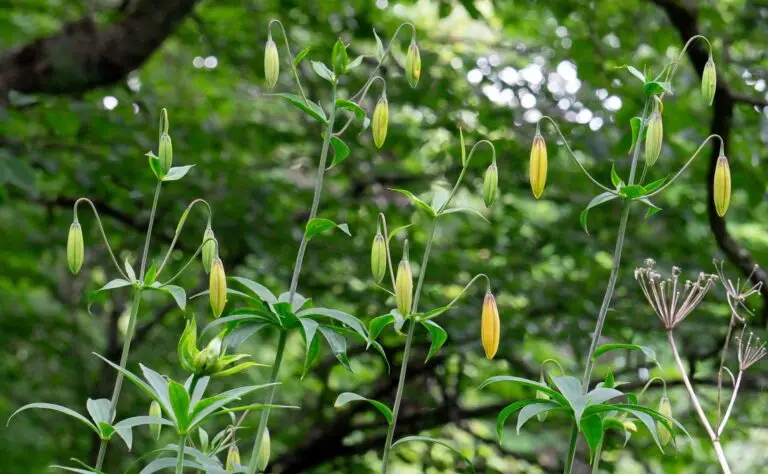
Remember: Turk’s Cap Lily is TALL
Turk’s Cap Lily’s stunning looks are helped in large part due to its height. At its happiest, it can get between 8 to 10 feet tall.
To sure that your landscaping looks great, think about this height before you plant. This means not putting Turk’s Cap Lily near the edges of borders (where it will look a little out of place, and block out smaller plants.) Instead, put it back a little way with shorter native plants in front of it.
New York’s Waterman Conservation Center has a nice overview video that shows these spectacular flowers in a garden:
Where is Turk’s Cap Lily native?
Turk’s Cap Lily is native to almost half the United States, from New Hampshire all the way south to Florida.
How do I say ‘superbum’?
You may have noticed that this plant’s Latin name is Lilium superbum, and perhaps giggled a bit. Wondering how to say it?
It’s pronounced superb-um (not, super-bum). 🍑
Where can I buy Turk’s Cap Lily?
There are a few online sources for buying Turk’s Cap Lily. As you look for plants try the 800-mile rule: buy plants that are grown within 800 miles of where you live (and the closer, the better).
This helps ensure the plants and seeds you’re buying have the DNA to thrive in your area, and will further help your local genome thrive and stay strong. (You can imagine how a plant from the Orlando area might not have the best DNA to plant in a Boston garden.)
Online sellers for Turk’s Cap Lily include:
- Native Wildflowers Online (Tennessee)
- Keystone Wildflowers (Robesonia, Pennsylvania; pick-up only)
- Plant Delights (North Carolina)
- Mid-Atlantic Native Plant Farm (Cobbs Creek, Virginia)
Local blooms, fewer glooms
Find native plants near you
Local plants and seeds—grown within 800 miles—are best suited for your garden. This also fosters cross-pollination among locally grown plants, enhancing their resilience for generations to come. Stay local for a happy garden!
What are good pairings for Turk’s Cap Lily?
There are lots of other native plants that love the moisture-rich, and wet environments of the Turks Cap Lily. Some great examples include Buttonbush, Cardinal flower, Great Blue Lobelia, and native azaleas.
And now you’ve met the amazing Turk’s Cap Lily! This is one of around 20 lilies that are native to North America. While there are hundreds of lilies native worldwide, these ~20 lilies have a special place in North American history and should be the first stops when planting a garden in the United States or Canada. Plant a few Turk’s Cap Lilies if you have the space, and make sure to take lots of pictures and add a garden nametag. Your neighbors will want to know how they can plant some, too. Happy planting!
Wondering what other lilies are native? Explore our Beginner’s Guide to Native Lilies.
Sources
- North Carolina Extension Toolbox, Lilium Superbum
- USDA, Turk’s Cap Lily
- University of Maryland Extension, Turk’s Cap Lily
- Virginia Native Plant Society, Turk’s Cap Lily
- Martin F Breed, Peter A Harrison, Armin Bischoff, Paula Durruty, Nick J C Gellie, Emily K Gonzales, Kayri Havens, Marion Karmann, Francis F Kilkenny, Siegfried L Krauss, Andrew J Lowe, Pedro Marques, Paul G Nevill, Pati L Vitt, Anna Bucharova, Priority Actions to Improve Provenance Decision-Making, BioScience, Volume 68, Issue 7, July 2018, Pages 510–516, https://doi.org/10.1093/biosci/biy050
